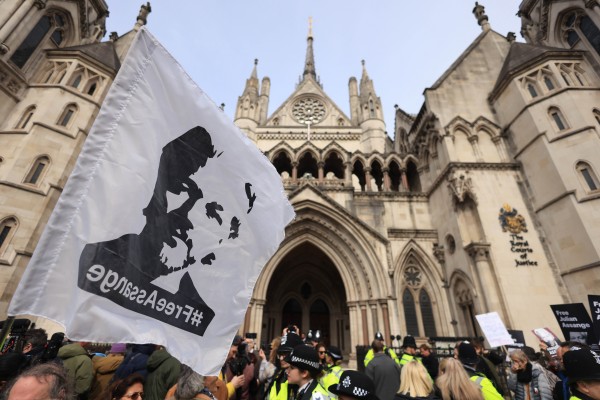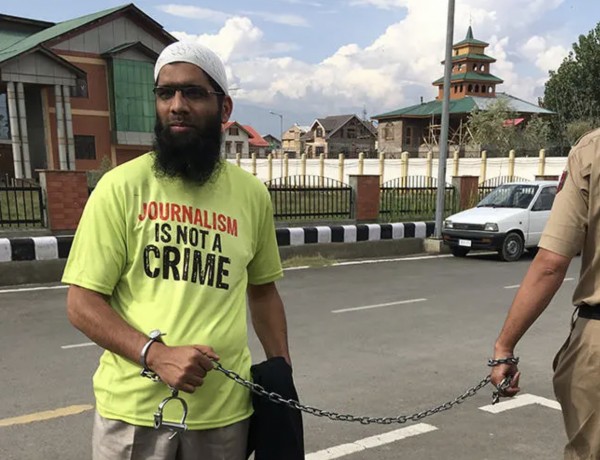Seven female journalists have been killed around the world in 2021 and 2022. On International Women’s Day, IPI urges authorities to bring those responsible for justice. More must be done to protect journalists on- and offline, including those facing gender-based attacks and harassment.
In 2021, five female journalists were killed, according to IPI’s Death Watch. In 2022, two women journalists have been killed so far. In five of the seven cases, there are strong indications that the journalists were targeted for their work. Two cases are still under investigation regarding the motive.
“The tragic killings of seven women journalists in Afghanistan, Yemen, and Mexico over the past 13 months, often targeted by extremists in countries where the rights of women to practice journalism are greatly suppressed, are a reminder of their profound courage and resilience”, IPI Executive Director Barbara Trionfi said. “This widespread pattern of sustained gender-based attacks and harassment on- and offline not only has a debilitating personal impact, but it also leads to self-censorship and the loss of diverse voices in journalism. The IPI global network stands with all journalists, including the many brave women reporters, working to promote the public’s right to independent news and information.”
Four of the seven killings of female journalists took place in Afghanistan. On March 2, 2021, media workers Shannaz Roafi, Sadia Sadat, and Mursal Wahidi were shot by unknown gunmen in two separate incidents on the same day. The three women worked for the independent radio and TV station Enikass in Afghanistan, which had received threats from extremist groups.
Three months later, on June 3, 2021, an Afghan news anchor working for Ariana News, Mina Khairi, was killed in a blast in western Kabul as the minivan in which she traveled exploded. The explosion also killed four others, including Khairi’s mother, and seriously wounded her sister. Although the motive for her killing has not been officially confirmed, news reports suggest she was killed for her work as a journalist.
On November 9, 2021, Rasha Abdullah Al-Harazi, a journalist from Yemen, died in a targeted car bomb attack while she was nine months pregnant. Al-Harazi had also received many threats in the months before her death, Khalid Ibrahim of the Gulf Centre for Human Rights told IPI last year. “By phone she was told to stop doing journalism”, he said. “But we didn’t know it would be this serious.”
In 2022, two female journalists have been killed so far, both in Mexico, a country that is experiencing one of its deadliest-ever periods for journalists – seven journalists have been killed in the country since January of this year alone. On January 23, 2022, journalist Lourdes Maldonado was shot in her car in the city of Tijuana. Maldonado was said to have feared for her life prior to her murder. She was part of a local government program to protect journalists in danger that failed to protect her in the end. On February 22, 2022, television host Michelle Perez Tadeo was found dead in Mexico City after being reported missing four days earlier. Her body was found wrapped in sheets by workers fighting a fire on the Picacho-Ajusco highway. The case is still under investigation.
A global challenge
While killing remains the most horrific way of silencing a journalist, female reporters across the globe also suffer from harassment and gender-based intimidation for simply doing their work, especially online.
On February 21, 2022, the Coalition Against Online Violence (CAOV) issued an alert about Rana Ayyub, a high-profile independent investigative reporter based in Mumbai, India, who has been the target of a sustained and crude intimidation campaign designed to silence her. In January, Ayyub wrote in The Washington Post about the tens of thousands of abusive social media threats she endured as her name trended on Twitter in connection with the attack. Since then, the threats have continued, with threatening behavior reported on the street outside her home.
In January 2022, IPI spoke with Quratulain Rehbar, a Kashmir freelance journalist who attends therapy regularly after suffering from years of harassment and threats. At the beginning of January, she was listed for an online “auction”, where her photograph was uploaded on an app for “sale” alongside 100 other women, including other journalists and celebrities.
“Eventually, they [women journalists in Kashmir] faded”, Rehbar told IPI. “They left this job because they had their own limitations. I am not judging anyone, but I don’t want a time where we don’t have any female journalists in Kashmir.”
In an interview last fall after joining IPI’s Executive Board, Etaf Roudan, director of Jordan’s Radio Al-Balad, recounted the difficulties that conservative pressures and gender-based discrimination pose for female journalists. “The great majority of women journalists in Jordan have suffered from different types of attacks or other obstacles”, she said.



